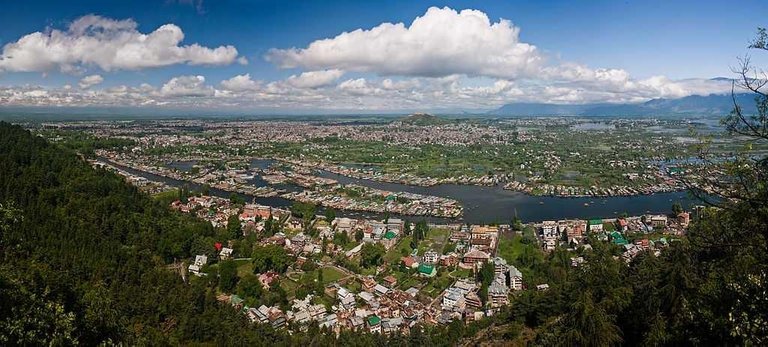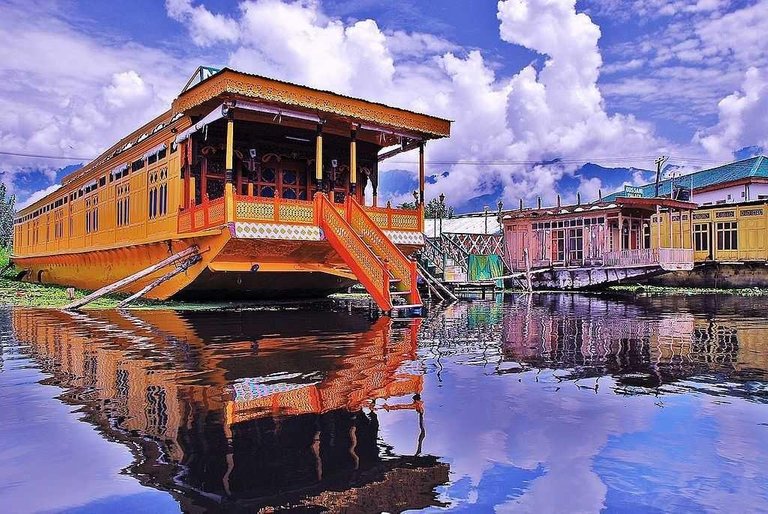Srinagar is the historical capital of the states of Jammu and Kashmir. It has rich history and culture. The business card of Srinagar is Dal Lake, which was once favored by Tsar Ashok. It became a well-known reservoir formed by the flow, flowing from the snowy peaks of the Himalayas. Dal Lake - the source of life for many generations of locals.

The floating market, filled with hundreds of boats, must be seen by Srinagar's guests. Here, local farmers sell their goods to sellers. There is also a natural exchange. The simplest scales, Kashmir dialects and non-weight stones. Over the centuries, the floating market has become a place where people buy and sell goods, it can be said, from boat to boat. For the locals, this market is a daily reality. The successful trade in the afternoon is the guarantee of the evening banquet.

The black mud, which covers the bottom of the lake, has been formed for thousands of years and is very rich in organic matter. This produces excellent fertilizer, much better than commercial rich soil enriched with chemicals. Farmers use it in their fields. Even in fertile Kashmir, the area near Dal Lake is considered a chic agricultural area.

Kashmir, often called the Indian Alps, has been a favorite summer destination for rich and noble people since the days of the Mughal Empire. Here year round the weather is comfortable.

On the shore of the lake there are traditional houses, but here there is a completely different life. Dal Lake is like a big house, where thousands of people live. Floating houses appeared here in the era of British colonialism. According to custom, only Kashmiris are entitled to live in the land of Kashmir, therefore a landless England must build a house on water. So two hundred years ago hundreds of floating houses became the symbol of Dal Lake.

Once Kashmir is a bright flower that adorns the Great Mogul Empire, the gateway to a new civilization. Now there is little to remember about that glorious era. In modern Indian history, Kashmir is called a disaster zone. This area turned into a lost paradise - the guard post on the shores of the lake contrasts with its beauty.
After India gained independence, animosity between Hindus and Muslims increased, spurred on by the "divide and conquer" policy of the British Empire. As a result, India is divided into two parts - India and Pakistan, as carriers of different religions (Hinduism and Islam) to be separate. The Muslims moved to Pakistan, and the Hindus moved to India. This process takes a lot of casualties.

Kashmir must also choose. 80 percent of Kashmiris are Muslim, but Maharaja Hari Singh they are Hindus, and therefore this region remains in India. Thus, Muslim Kashmir becomes an island of Islamism in a Hindu state. The consequences are tragic. The Kashmir problem provoked three Indo-Pakistani wars. Since 1990, as a result of activating the fighters for Kashmiri independence, India was forced to introduce troops there.

Now that history has stopped here, Kashmir has slowly turned into an empty shell. The ignorance of state officials and the destructive actions of the conflicting political forces caused the first to experience degradation. While the government values the dream of turning Kashmir into a popular tourist spot, for decades the blossoming land, framed by the Himalayas, is a peaceful dream.
Congratulations! This post has been upvoted from the communal account, @minnowsupport, by badribireuen from the Minnow Support Project. It's a witness project run by aggroed, ausbitbank, teamsteem, theprophet0, someguy123, neoxian, followbtcnews, and netuoso. The goal is to help Steemit grow by supporting Minnows. Please find us at the Peace, Abundance, and Liberty Network (PALnet) Discord Channel. It's a completely public and open space to all members of the Steemit community who voluntarily choose to be there.
If you would like to delegate to the Minnow Support Project you can do so by clicking on the following links: 50SP, 100SP, 250SP, 500SP, 1000SP, 5000SP.
Be sure to leave at least 50SP undelegated on your account.